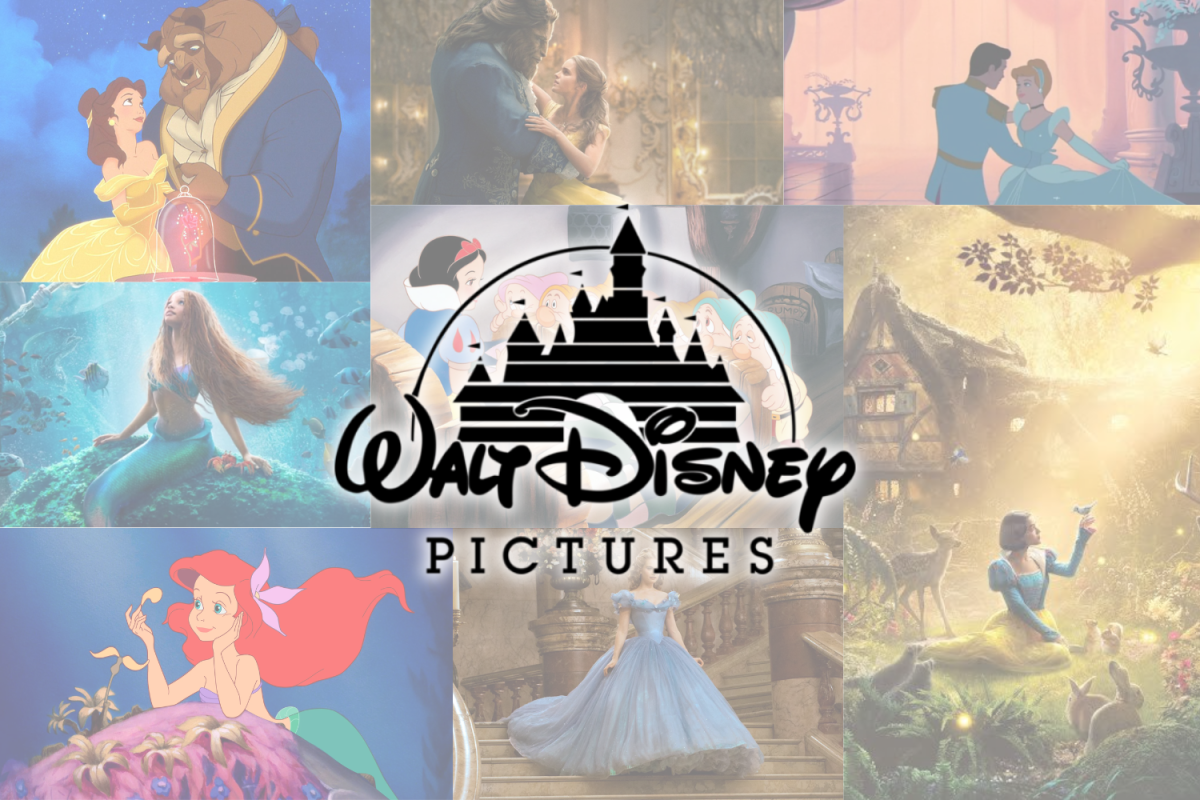In 1923, Mr. Walt Disney and his brother Mr. Roy Disney founded the Disney Brothers Cartoon Studio, according to history.com. Over the past century, their company has grown into one of the largest media corporations in the world, known as the Walt Disney Company. It has had a tremendous impact on the entertainment industry, creating 829 films in total since 1937, according to d23.com. The company began creating animated feature films, and soon began producing live-action content. In the past 31 years, Disney has revived original works with the creation of 24 live-action adaptations of previous films, according to indiewire.com. These remakes have proven to be commercially successful but ultimately garner mixed reception from fans and critics, claiming that they do not live up to the original cartoon, according to forbes.com. While live-action adaptations of classic animated films continue to bring in revenue, Disney must focus on cultivating new stories instead of recycling old ones with the assurance of success in the box office.
The first live-action remake of a Disney film was The Jungle Book, released in 1994, according to ew.com. Although live-action remakes were not yet popular, the film was a success, grossing $52,389,402 worldwide since its premiere, according to imdb.com. The studio went on to produce a remake of 101 Dalmatians in 1996, and most recently, Snow White in March 2025. Among the most successful live-action remakes are Beauty and the Beast (2017), Aladdin (2019), and Cinderella (2015), according to sideshow.com.

Controversy arises, however, concerning Disney’s transition from hand-drawn animated movies to live-action films utilizing computer-generated imagery (CGI). For example, The Jungle Book (1994) used approximately 150 animals in the film, according to humanehollywood.org. In contrast, Disney produced the 2019 remake of The Lion King using only cutting-edge digital tools to “animate” the animals in pursuit of photorealism instead of staying true to its original form, according to latimes.com. The hybrid nature of the production, utilizing CGI for the animals but live-action equipment to film the set, led audiences to question the film’s very medium. Director Mr. Jon Favreau explained how the remake introduced a new medium, according to latimes.com.
“There’s so much confusion as to what the medium is,” Mr. Favreau said, according to latimes.com. “Is it a hybrid? Even that is misleading. […] The trick here was to make it feel like an entirely new medium. Even though we use animation techniques, we wanted it to appear live-action. And that required a lot of technical and technological innovation.”
More recent instances of CGI popping up in Disney films have sparked controversy, such as in the recently released Snow White, according to theslatetimes.com. Disney used CGI to portray the seven dwarves instead of hiring actors to play these characters, despite the film’s live-action nature, putting a significant damper on the integrity of the production. These new adaptations often prioritize photorealism over staying true to original fantasy elements. Mediums of animation and live-action imagery both have unique strengths and weaknesses, and inevitably appeal to different audiences. Animated films showcase creativity and offer more imaginative storytelling possibilities, while live-action productions are more realistic, according to vidico.com. The practical nature of live-action films leads to inferior retellings of originally more creative, artistic works.

The trend of live-action remakes essentially comes down to profit, according to decodingeverything.com. These films are a safe bet at the cinema for families and are less risky to produce than entirely new stories, as they rely on pre-existing fan bases. Disney looks to rake in profit from longtime fans while introducing new generations to the classics when releasing these adaptations.
Though the content is mostly unoriginal, the new Snow White adaptation actually brings new elements to the 1937 story. The movie features new songs and plot developments while still maintaining a connection to the original work. However, experts estimate that the film will lose approximately $115 million, after ending its second United States (US) weekend with only $14.2 million in sales, according to deadline.com. Additionally, it has gained negative reception from some audiences asserting that the narrative additions are unnecessary and that the work, including its mediocre CGI elements, is subpar nonetheless, according to dbknews.com.
Originating as a cartoon animation company, Walt Disney Animation Studios have far ventured from their original, nostalgic hand-drawn animated films. The company now reproduces these stories with the help of advanced CGI, depending on audience recognition of a name on a marquee to bring in box office sales, similar to many modern-day adaptations. These new films flatten the exaggerated, magical elements of their predecessors. Disney must turn its attention to generating new stories for films rather than simply remaking older, more well-known films, especially with less-than-remarkable CGI and plotline elements. Ultimately, Disney is not contributing to new ideas in the film industry by reusing content to create films focused on spectacle and realism rather than speaking to the initial imaginative medium of animation.
Featured Image by Caroline Gammon ’26




